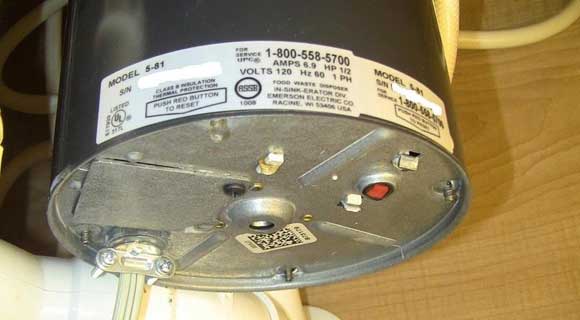What to Do When Your Garbage Disposal Is Leaking From Reset Button
By Space Coast Daily // June 8, 2019

A leaking garbage disposal can be annoying. It can soak things and make them extremely soggy. Of course, the modern garbage disposal is indispensable and time-saving.
However, leakages can occur—making the surrounding smelly and stinking. Plus, repairing malfunctioning garbage disposal can be annoying to repair.
Think in terms of those inaccessible moving parts, those fixes that require lots of time, plus the long instructions involved. Luckily, the guide below is going to walk you through the steps on how to fix your leaking garbage disposal. Even more, you’ll learn how to prevent future garbage disposal leakages.
Find the Leaks
Start by unplugging your disposal unit. Then observe if there is any moisture on the socket. Look for things like standing water and dampness. Then shut down your garbage breaker for disposal.
The following step involves removing anything under the sink. This will give you enough space for work. From here you are required to stop the drain sink using a very tight seal.
Then continue by filling up the sink with water. Alternatively, you can include food coloring in the water to increase visibility. This will help you to easily identify any leakage.
From here, observe the leak. Check the unplugged spot when fixing your garbage disposal. If you realize that there is no leak (its dry), remove its top sink. Then observe the dishwasher hose. Plus, don’t forget to look at the drain and the water supply line. Also, remember to observe the disposal unit’s bottom.
Fixing the Leak
The above investigations should help you locate the leak. Common places that experience leakages include:
- Sink flange
- Drain
- Dishwasher Hose
- Disposal bottom
Prevent Future Leaks
If you want to prevent future leaks, use your garbage disposal unit wisely.
- Soft foods—don’t bring any food into the unit. It has to be soft. So, hard foods like bones, apple cords, and raw potatoes have no place in your garbage disposal unit. They can damage it.
- Things to avoid—don’t get everything into your garbage disposal. Some of the things you should not get into your garbage disposal unit include seafood, paint, coffee husks, egg shells, chemicals, among others. Do your research and know the things that can damage the blades or pipes.
- Cold water—before and after use, be sure to run cold water in the sink. Doing so will prevent fats and other stuff from congesting the gunk. Remember, congested fat tends to deteriorate your sink and lead to leaks
- Inspection—don’t underestimate the power of regular inspection. Be sure to inspect it for leaks and damages every after six months.
Compromised Outlet
Most garbage disposal units tend to have issues with wastewater outlets. Common reasons for waste water outlet issues include poor installation and vibration. Compromised vibration can cause wastewater outlet issues. Vibration interferes with the joint and the pipe elbow.
Therefore, it’s good to inspect and determine if it can be repaired. The best way to go about this is to contact a professional to do an inspection. If the issue is not that bad, the joints will be readjusted to ensure a better connection.
Repair Steps
Follow the following quick steps:
• Inspect the elbow pipe. Determine if it’s cracked. If that is the case, purchase a replacement.
• Remove all other subsequent pipes. It will help you remove the elbow piece
• Put the elbow piece back—while ensuring to position the rubber gasket in its place.
• Fasten its bolts—but not too tightly to avoid part damages
Leaking Bottom
If the leaks originate from the bottom—chances are that its seals are burst up. This can be due to old age—which is essentially about 13 years of usage.
In case you determine that your garbage unit is old, you have two options; contact a professional or buy a new unit. According to the experts, it’s better to replace it with a new one instead of repairing it. But be sure to choose a reputable supplier or brand.
Cracks Appearing In the Disposal Body
An aged disposal garbage unit can crack—especially along its interior lining. This will lead to water appearing at the seams. And if this is the case with your system, the only option is to replace it. It cannot be repaired.
Leaks from the Top
The likely culprit here is the sink flank. The flank connects the sink with your garbage disposal unit. Thus, if its seal corrodes and loosens up with time, leaks can occur. Plus, if the unit is it, it can loosen the seal—leading to leakages.
The fix: The only way to fix the problem is by re-sealing the garbage disposal unit.
Here is how to do it:
- Disassemble the garbage disposal
- Then carefully clean off any old putty
- Finally, reseal it
Leaks from the Bottom
The only likely culprit for a garbage disposal that leaks from the bottom is a busted seal located in the unit. Remember, garbage seals tend to wear with time.
So, the only possible fix here is to purchase a new best rated garbage disposal. Also, if you have a warranty, you can contact your supplier and discuss it with him/her. However, garbage disposals don’t cost much. So, getting a new one is not going to break the bank.
Leaks from the Side
If your garbage disposal is leaking from the sides, chances are that the drain lines have issues. The garbage disposal has two connections. The smaller hose collects waste from the dishwasher while the larger one drains the waste into the sewer line.
There are two main solutions for this problem—tighten or reseal its connections. Try tightening the metal cap that connects the disposal and the dishwasher. Use a screwdriver and observe if the leakages stop. Also, you can try tightening the rubber gasket in the connecting screws. If the leaks don’t stop, consider replacing the screws and the rubber gasket.
The Bottom-Line
Don’t let leaking garbage disposal pin you down. There are numerous solutions you can apply to stop the leakages. The best way is to identify the problem and look for the most appropriate solution. Follow the above steps and fix a leaking garbage disposal today!
CLICK HERE FOR BREVARD COUNTY NEWS














